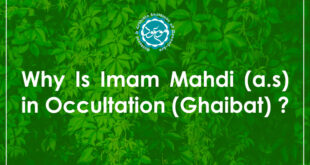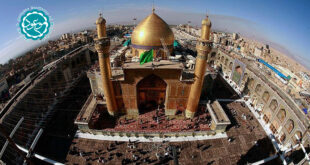Mahdi in Shiites’ Hadith Resources
Believing the existence of a universal peacemaker called “Mahdi” is more common and expanded among Imamiyyah Shiites; because if Sunnis accept that as a certain side issue, Shiites consider it as one of the main principles, because the dynasty of twelve Imams ends to him and he is the last successor.
Some of Islamic researchers have estimated the number of narratives about this subject, which have been quoted by Sunnis to 200 ahadith, while narratives about this subject, which have been quoted by Shiites, are maybe more than one thousand.
If narratives, which talk about the great universal peacemaker, are considered as Mutawatir (reaches the source) narratives among Sunnis, they are considered as “necessities of religion” among Shiites.
Accordingly, Shiite scholars have written books in this field more than Sunni scholars; although, they have tried only to collect the narratives and didn’t have analyze them except some cases, maybe they didn’t consider it necessary in that time.
But anyway, much effort has been made in collecting these narratives.
Among books, which have been written about this subject by the method that has been explained, maybe the three following books, which contemporary scholars have written them, are more comprehensive.
1) The book “al-Mahdi”14 written by great faqih, Sayyid Sadr al-Sin Sadr.
2) The book “al-Burhan ala Wujud Sahib al-Zaman”, written by the late scholar, Sayyid Muhsin al-Amin.
3) The book “Muntakhab al-Athar fi Ahwal al-Imam al-Thani Ashar”, written by the great scholar, Lotfollah Safi that has been performed by the encouragement and guidance of the late ayatollah Borujerdi and an abstract version of that called “Promise of Peace and Security” has been published in Persian.
The resources of these books are several books from previous Shiite and Sunni scholars, which have been written independently about this subject or have been expressed among other subjects.
According to the fact that mentioning all the narratives, which have been quoted, about this subject is not possible to be performed in this book, we only mention some chapters of the last book as a list and in the next chapters we will point some of them when it is necessary:
1) in the first chapter, it is pointed to ahadith which have been quoted from Prophet (S) and Imams (pbut) about the twelve leaders from, and 271 ahadith from famous Sunni and Shiite resources have been collected in his chapter that some of them contain the term “Imam”, some of them “Caliph” and some others “Amir” or other expressions like these.
These ahadith have been mentioned in the most important hadith resources of Ahl Sunnah and the most important resources of Ahl al-Bayt.
Justification of these kinds of narratives is clear for Shiites, but Ahl Sunnah have great difficulty in justification of these ahadith because on the one hand, they don’t deny the existence of these ahadith in their genuine resources and on the other hand, they didn’t have accepted the belief of Shiites about “the twelve Imams”; sometimes, they consider the first four caliphs as the main issue and add the next 8 caliphs to them!
While, if they want to consider the caliphs one by one as those who have been promised by prophet as truthful successors then it is not possible to accept persons like “Yazid” and his successors from the rulers of Umayyad Caliphate among them, with as much condemnation; and if want to select some of them who were less aberrant then we have no criterion for that according to the unity of the goals of Umayyad and Abbasid Caliphate; moreover, cutting the chain of these twelve successors by time makes problem itself.
Sometimes, they say that four of these 12 caliphs are those first caliphs and 8 of them will come in future times and the last one of them is Mahdi! And in this way, as much we perform fanaticism, it is a big gap among the chain of truthful successors of prophet that is not according to the foresaid narratives anyway.
2) In the next chapter, narratives have been mentioned, which show that the number of the leaders after Prophet (S) is the number of superiors and grandchildren of Bani Israel that holy Qur’an has counted them as twelve persons; and 40 ahadith have been collected in this subject from the books of both groups, which in fact complete the previous discussion.
3) In the third chapter, narratives have been collected, which affirm that they are 12 persons and their first one is Ali (as) and the number of the narratives of this discussion is 133.
4) In the next chapter, 91 narratives have been collected from the resources of both groups, which say the fist caliph is Ali (as) and the last one if Mahdi (as).
5) In the next chapter, it talks about ahadith, which affirm that Imams are 12 persons, and 9 of them are from the sons of Hussein ibn Ali (as); 139 ahadith have been mentioned in this chapter.
6) In another chapter the discussion is about narratives in which this sentence is mentioned that “تاسعم قائمهم” (the ninth of them will be the one who arises) adding to confirming the number 12 and the matter that 9 of them are from the sons of Hussein (as). There are 107 ahadith in this chapter.
7) In another chapter, ahadith have been mentioned that have specified them with names; some of these ahadith have been collected from Sunni resources but most of them have been collected from Shiite resources and 50 ahadith have been mentioned in this chapter.
Also, several narratives about physical and spiritual characteristics of Mahdi and the signs of his advent and the conditions of his government and universal revolution and other issues related to this great rise.
It is cleared from these ahadith that the great universal peacemaker, the promised Mahdi, has the following characteristics:
A) Is from the dynasty of prophet of Islam and his children.
B) Is from the sons of Imam Hussein (as).
C) Is the twelfth leader after the prophet.
D) Is the son of Hassan ibn Ali al-Askari.
E) Will fill the world with justice.
F) He will have the universal government.
G) Deprived and exploited ones will become free in his time and wars will end and peace and construction will take their place.
As we said before, the number of these narratives is so many that it needs a separated books and we abstain from mentioning all of narratives, except those which are necessary to be mentioned in the next discussions for explaining and completing the discussion, because different books have been written about this subject that some of them have been mentioned above.
The problem is that usually, scholars have only quoted the narratives and didn’t have analyzed them enough; our goal in this book is to work more on rational reasons, also to analyze the reasons in quotations and narratives.
1. Majma’ al-Bayan, beneath the verse 9, interpretation of sura as-Saff (61).
2. Interpretation Burhan, vol. 2, page 121.
3. Majma’ al-Bayan, beneath the verse 33, sura at-Tawbah (9).
4. It should be considered that the master has written this text before the victory of the Islamic Revolution of Iran and the book “End of the Age of Marxism” is published from him ten years before the Collapse of the Soviet Unions. “Publisher”.
5. A group of great scholars of al-Azhar and Egypt have written important commentaries on this book, as it is written in its preface, it has been written for collecting a reliable collection of “quintet hadith books” which is one of the most important hadith books of Sunnis.
6. Consider the time of writing the book.
7. at-Taj, vol. 5, page 310.
8. Ibn Khaldun, printed in Beirut, page 311 (according to the quotation of Mahmoud Aburiya in the book “Azwa’ ala al-Sunnah al-Muhammadiya”).
9. Noor al-Absar, page 157.
10. Risalah of Sabban, commentary on Noor al-Absar, printed in Egypt, page 138.
11. Sawa’iq, page 99.
12. at-Taj, vol. 5, page 327.
13. Bible Dictionary, page 818.
14. This book has been also translated to Persian.
Imam al-Mahdi in Sunni Hadith Resources Part 1
Imam al-Mahdi in Sunni Hadith Resources Part 2
Imam al-Mahdi in Sunni Hadith Resources Part 3
 Mouood Mouood English Edition
Mouood Mouood English Edition




